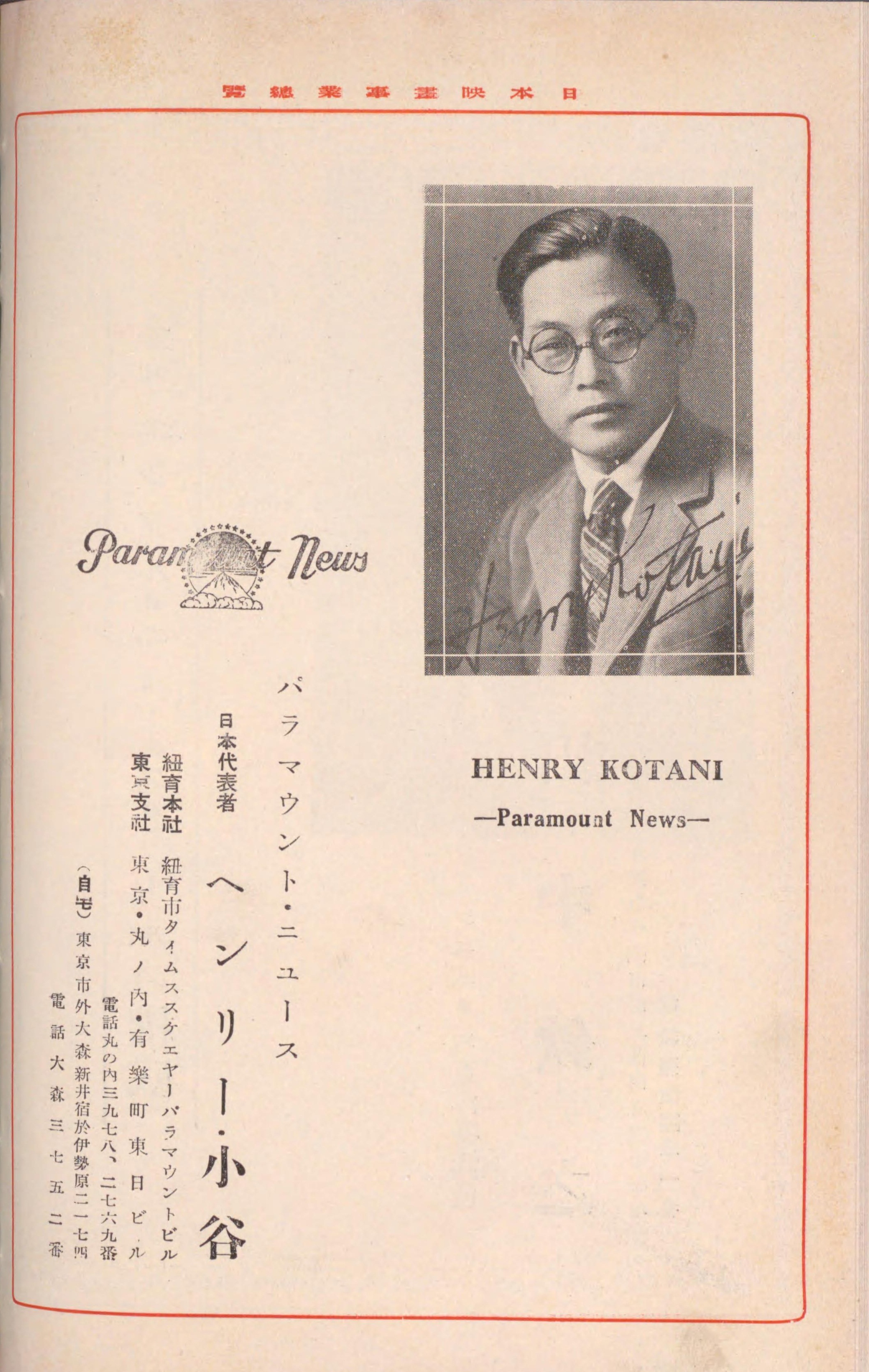Henry Kotani on:
[Wikipedia]
[Google]
[Amazon]
was a pioneering Japanese
 Born Kuraichi Kotani in
Born Kuraichi Kotani in
film director
A film director controls a film's artistic and dramatic aspects and visualizes the screenplay (or script) while guiding the film crew and actors in the fulfilment of that vision. The director has a key role in choosing the cast members, pr ...
and cinematographer
The cinematographer or director of photography (sometimes shortened to DP or DOP) is the person responsible for the photographing or recording of a film, television production, music video or other live action piece. The cinematographer is the ch ...
.
Career
 Born Kuraichi Kotani in
Born Kuraichi Kotani in Hiroshima Prefecture
is a prefecture of Japan located in the Chūgoku region of Honshu. Hiroshima Prefecture has a population of 2,811,410 (1 June 2019) and has a geographic area of 8,479 km² (3,274 sq mi). Hiroshima Prefecture borders Okayama Prefecture to the eas ...
, Kotani emigrated to the United States with his parents when he was still a boy. Graduating from high school, he began working as an actor and cinematographer under the name Henry Kotani in Hollywood, particularly at Famous Players Lasky. He frequently worked on Donald Crisp
Donald William Crisp (27 July 188225 May 1974) was an English film actor as well as an early producer, director and screenwriter. His career lasted from the early silent film era into the 1960s. He won an Academy Award for Best Supporting Actor ...
's films. In 1920, on the recommendation of Cecil B. DeMille
Cecil Blount DeMille (; August 12, 1881January 21, 1959) was an American film director, producer and actor. Between 1914 and 1958, he made 70 features, both silent and sound films. He is acknowledged as a founding father of the American cinem ...
, the newly formed Shōchiku
() is a Japanese film and kabuki production and distribution company. It also produces and distributes anime films, in particular those produced by Bandai Namco Filmworks (which has a long-time partnership—the company released most, if not al ...
film company hired Kotani and brought him back to Japan. There he directed and photographed Shōchiku's first film, ''Shima no onna'' in 1920, and in 1921 wrote, directed and photographed ''Gubijinsō'', the first film of the star actress Sumiko Kurishima
(15 March 1902 – 16 August 1987) was a Japanese actress and master of traditional Japanese dance. She is often considered Japan's first female movie star.
Career
On her father's side, Kurishima was the daughter of , an actor and news ...
. His career at Shōchiku did not last long, but he helped establish the modern visual style of Shōchiku's output and raise cinematographers such as Michio Midorikawa. He later became head of the East Asian bureau of Paramount News Paramount News is the name on the newsreels produced by Paramount Pictures from 1927 to 1957.
History
The Paramount newsreel operation began in 1927 with Emanuel Cohen as an editor. It typically distributed two issues per week to theaters across ...
. In recognition of his contributions, he was given a lifetime achievement award at the Mainichi Film Awards
The
are a series of annual film awards, sponsored by Mainichi Shinbun (毎日新聞), one of the largest newspaper companies in Japan, since 1946. It is the first film festival in Japan.
History
The origins of the contest date back to 1935, ...
in 1960.
Selected filmography
As cinematographer
*''Believe Me, Xantippe
''Believe Me, Xantippe'' is a lost 1918 American silent romantic comedy film produced by Jesse Lasky for release through Paramount Pictures. The film was directed by actor/director Donald Crisp and stars Wallace Reid and Ann Little. The film i ...
'' (1918)
*'' The Goat'' (1918)
*''Jane Goes A-Wooing
''Jane Goes A-Wooing'' is a lostProgressive Silent Fil ...
'' (1919)
*'' Mrs. Temple's Telegram'' (1920)
As director
*'' Shima no onna'' (島の女) (1920) *'' Gubijinsō'' (虞美人草) (1921)As actor
*'' The Wrath of the Gods'' (1914) *''The Geisha
''The Geisha, a story of a tea house'' is an Edwardian musical comedy in two acts. The score was composed by Sidney Jones to a libretto by Owen Hall, with lyrics by Harry Greenbank. Additional songs were written by Lionel Monckton and James P ...
'' (1914)
*''The Typhoon
''The Typhoon'' is a 1914 American drama film directed by Reginald Barker, written by Melchior Lengyel, and starring Sessue Hayakawa, Gladys Brockwell, Frank Borzage, Henry Kotani and Leona Hutton. It was released on October 10, 1914, by Paramoun ...
'' (1914)
*''The Sable Lorcha
''The Sable Lorcha'' is a novel by Horace Hazeltine that was adapted into a 1915 silent film.
Book
The book was published by A. C. McLurg & Co. in 1912. A contemporary review in the ''San Francisco Call'' states that the excitement never flags ...
'' (1915)
References
External links
* * {{DEFAULTSORT:Kotani, Henry Japanese male film actors Japanese cinematographers 1880s births 1972 deaths Japanese male silent film actors 20th-century Japanese male actors People from Hiroshima Prefecture Japanese emigrants to the United States